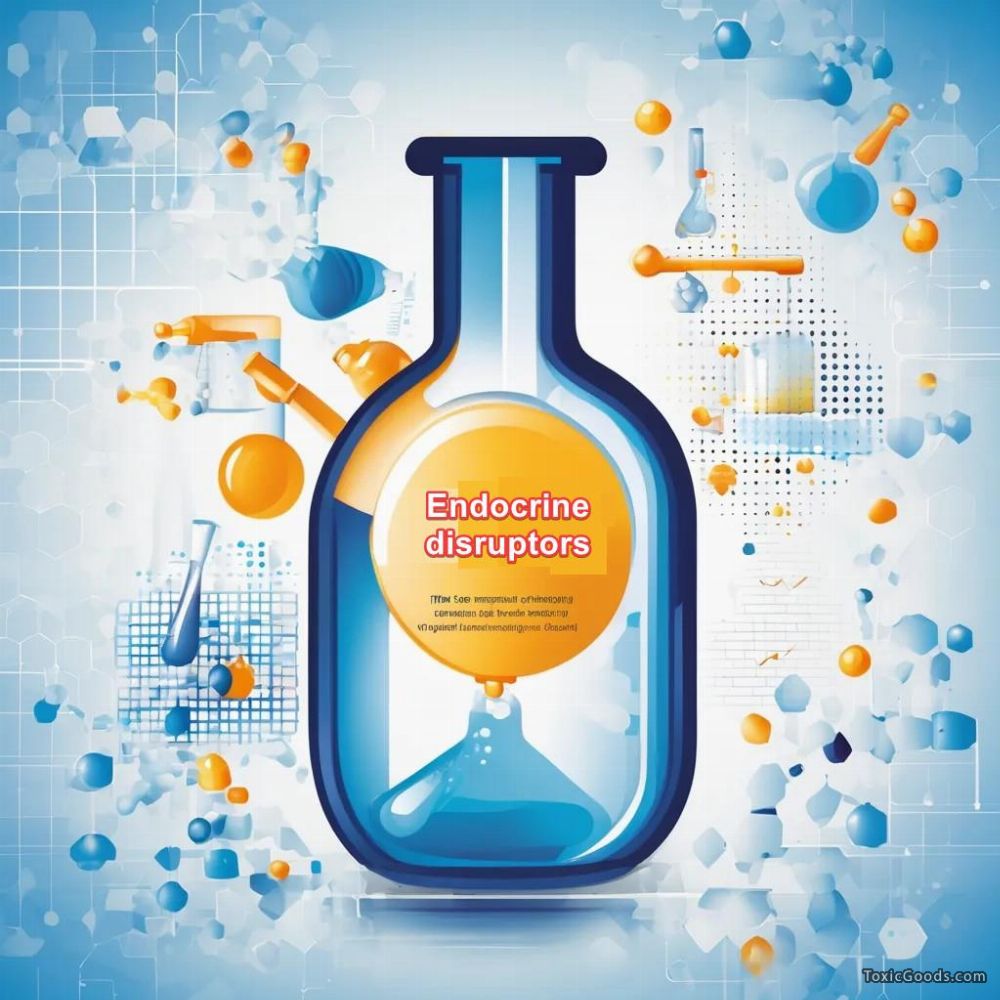Chemical Exposures and Gender/Sexual Ambiguity
Understanding the Potential Links
The relationship between chemical exposures and gender/sexual ambiguity is an emerging area of scientific and medical research that examines how endocrine-disrupting chemicals (EDCs) may influence sexual development and identity. This article explores current research on how prenatal and early-life exposure to certain industrial chemicals, pesticides, and environmental pollutants may contribute to variations in gender identity, sexual orientation, and reproductive development.
Key Topics Covered:
- Endocrine-Disrupting Chemicals (EDCs): Examination of chemicals like phthalates, bisphenol A (BPA), and pesticides that may interfere with hormonal systems.
- Developmental Impacts: How chemical exposures during critical fetal development periods might affect sexual differentiation and neurological pathways.
- Epidemiological Evidence: Review of studies linking chemical exposures to increased prevalence of gender dysphoria, non-binary identities, or intersex conditions.
- Mechanisms of Action: Scientific explanations for how EDCs might alter brain sexual differentiation or genital development.
- Controversies and Limitations: Discussion of research challenges, including study design limitations and sociocultural factors.
The Hormonal Theory of Sexuality
The hormonal theory of sexuality states that exposure to certain hormones plays a role in fetal sex differentiation thus such exposure influences the sexual orientation that emerges later in the adult. Prenatal hormones are seen as the primary determinant of adult sexual orientation.
Factors and Mechanisms of Action
Scientists have postulated a wide range of adverse human health effects of exposure to endocrine-disrupting chemicals (EDCs). With the frightening amount of toxins now circulating on earth, there’s something else that is happening to particularly frogs and humans due to the chemical exposures – gender/sexual ambiguity. Science positively proves that chemicals are disrupting the critical hormones, including the primary chemical messengers that play a vital role during the fetal development stage.
Effects on Animal Populations. In the frog/fish/other animal populations, we have long been seeing an increase in offspring with “mixed” gender, which makes them infertile and unable to reproduce.
Feminization in Marine Life. Toxic exposures cause fish and other marine mammals to be “feminized”: i.e., they develop, even if genetically male, only female sexual genitalia and not male. This is part of the reason these populations are decreasing because they cannot properly reproduce.
Human Impacts and Intersex Conditions
A similar process is happening in human populations. More children with ambiguous genitalia (internal and external) are being born. Note: This is not the same thing as one’s sexual orientation or gender role identity. It is a physical sexual abnormality caused by the disruption of the normal development due to an exposure to toxic, cell-changing chemicals.
Social and Medical Implications
We don’t hear much about this because the parents are often embarrassed and would not want their children’s difference to become socially known. But it is a very real phenomenon that is happening to many more people since the advent of The Chemical Age in the 1950s. That uncontrolled experiment is affecting human fertility and normal sexual growth.
Our children are in serious distress. And so our future generations.
Documented Evidence and Research Findings
A rapidly growing number of children are born with intersex variation (ambiguous genitalia). Documented evidence shows that endocrine-disrupting chemicals in the household environment causes reproductive variations via dysregulation of normal reproductive tissue differentiation, growth, and maturation if the fetuses are exposed to EDCs during developmental times in utero.
Animal Studies
Animal studies support fish and reptile embryos exhibited IV and sex abnormalities when exposed to EDCs. Occupational studies proved a higher prevalence of offspring with mutations in chemically exposed workers (both male and female).
 Key Endocrine-Disrupting Chemicals
Key Endocrine-Disrupting Chemicals
Chemicals connected with endocrine-disrupting ability in humans include but not limited to:
- Organochlorine pesticides
- Petroleum distillate based laundry detergents
- Polychlorinated biphenyls
- Phthalates
- Furans
Emerging Concerns: New Generation EDCs
Recent research has identified additional classes of chemicals with endocrine-disrupting potential, including parabens (common preservatives in cosmetics and personal care products) and synthetic musks (used in fragrances). These newer compounds are particularly concerning because they are increasingly prevalent in everyday consumer products, yet their long-term health impacts remain understudied. Bisphenol S (BPS) and bisphenol F (BPF), marketed as “BPA-free” alternatives, are now recognized to have similar endocrine-disrupting properties to their predecessor, demonstrating how chemical substitutions may not always reduce health risks.
Ubiquitous Exposure Pathways
What makes these EDCs especially problematic is their pervasive presence in modern environments – they leach from food packaging, accumulate in household dust, and are even detected in drinking water. Many EDCs are lipophilic (fat-soluble), allowing them to bioaccumulate in human tissue and persist in the environment for decades. The developing fetus is particularly vulnerable, as these chemicals can cross the placental barrier during critical windows of development. This widespread, low-level exposure creates complex “chemical cocktail” effects that are challenging to study but may have cumulative impacts on human health across generations.
Most Studied EDCs
| Chemical Name | Chemical Formula | Common Uses | Observed Health Effects |
|---|---|---|---|
| Bisphenol A (BPA) | C15H16O2 | Plastics, food containers, receipts | Early puberty, reproductive disorders, increased risk of breast/prostate cancer |
| Phthalates (e.g., DEHP) | C24H38O4 | Vinyl flooring, cosmetics, fragrances | Male reproductive abnormalities, reduced sperm count, asthma |
| Polychlorinated biphenyls (PCBs) | C12H10-xClx | Electrical equipment (historical use) | Neurodevelopmental deficits, thyroid dysfunction, immune suppression |
| Dioxins (TCDD) | C12H4Cl4O2 | Industrial byproduct, waste incineration | Reproductive/developmental problems, immune system damage, chloracne |
| Perfluorinated compounds (PFOA/PFOS) | C8HF15O2 | Non-stick cookware, stain-resistant fabrics | Thyroid disease, low birth weight, immune system effects |
| Atrazine | C8H14ClN5 | Herbicide | Demasculinization of frogs, menstrual irregularities, breast tumors |
| Diethylstilbestrol (DES) | C18H20O2 | Formerly used to prevent miscarriage | Vaginal cancer in daughters, reproductive abnormalities, infertility |
| Triclosan | C12H7Cl3O2 | Antibacterial soaps, toothpaste | Thyroid disruption, antibiotic resistance, altered estrogen regulation |
Other EDCs include a variety of substances classified according to their known or suspected activity in relation to sex hormone receptors and pathways. The most-studied and best documented are:
- Environmental estrogens (mimic estradiol and bind to estrogen receptors)
- The pesticide methoxychlor
- Certain polychlorinated biphenyls (PCBs)
- Bisphenol A (BPA; used to make polycarbonate plastic)
- Pharmaceutical estrogens such as diethylstilbestrol (DES)
Medical and Social Consequences
Intersex individuals may have concurrent physical disorders that require life-long medical intervention and experience gender dysphoria.
Research Needs and Future Directions
An urgent need exists to determine which chemicals possess the greatest risk for ambiguous genitalia development and the mechanisms by which these chemicals are capable of interfering with normal physiological development in children in order to prevent serious complications.
This article presented a science-based exploration of a complex and sensitive topic, acknowledging both the preliminary nature of some findings and the importance of respecting all gender identities while investigating potential environmental health influences.
References and Sources:
- “Endocrine-Disrupting Chemicals and Gender Development” – Environmental Health Perspectives
Description: Peer-reviewed research article examining how prenatal EDC exposure may influence gender-related behaviors and identity.
URL: https://ehp.niehs.nih.gov/ - “Chemical Exposures and Sexual Differentiation” – Nature Reviews Endocrinology
Description: Comprehensive review of how environmental chemicals may disrupt typical sexual development pathways.
URL: https://www.nature.com/articles/s41574-020-00445-2 - “Intersex Human Rights and Environmental Causes” – United Nations Environment Programme
Description: Report discussing the intersection of environmental pollution, intersex conditions, and human rights considerations.
URL: https://www.unep.org/ - “Gender Diversity and Environmental Health Research” – American Journal of Public Health
Description: Analysis of the methodological challenges in studying links between chemical exposures and gender diversity.
URL: https://ajph.aphapublications.org/

